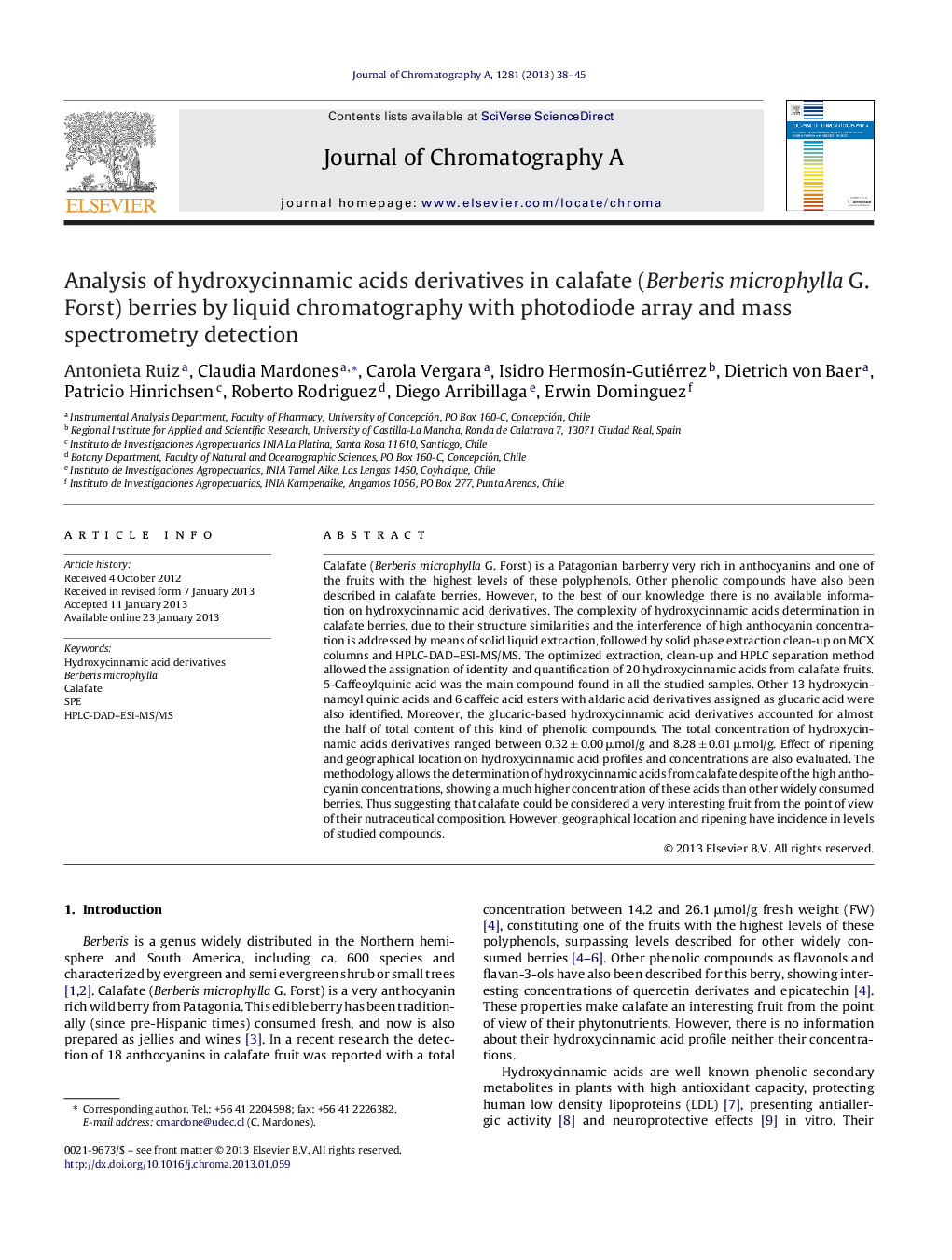| کد مقاله | کد نشریه | سال انتشار | مقاله انگلیسی | نسخه تمام متن |
|---|---|---|---|---|
| 1204532 | 1493645 | 2013 | 8 صفحه PDF | دانلود رایگان |

Calafate (Berberis microphylla G. Forst) is a Patagonian barberry very rich in anthocyanins and one of the fruits with the highest levels of these polyphenols. Other phenolic compounds have also been described in calafate berries. However, to the best of our knowledge there is no available information on hydroxycinnamic acid derivatives. The complexity of hydroxycinnamic acids determination in calafate berries, due to their structure similarities and the interference of high anthocyanin concentration is addressed by means of solid liquid extraction, followed by solid phase extraction clean-up on MCX columns and HPLC-DAD–ESI-MS/MS. The optimized extraction, clean-up and HPLC separation method allowed the assignation of identity and quantification of 20 hydroxycinnamic acids from calafate fruits. 5-Caffeoylquinic acid was the main compound found in all the studied samples. Other 13 hydroxycinnamoyl quinic acids and 6 caffeic acid esters with aldaric acid derivatives assigned as glucaric acid were also identified. Moreover, the glucaric-based hydroxycinnamic acid derivatives accounted for almost the half of total content of this kind of phenolic compounds. The total concentration of hydroxycinnamic acids derivatives ranged between 0.32 ± 0.00 μmol/g and 8.28 ± 0.01 μmol/g. Effect of ripening and geographical location on hydroxycinnamic acid profiles and concentrations are also evaluated. The methodology allows the determination of hydroxycinnamic acids from calafate despite of the high anthocyanin concentrations, showing a much higher concentration of these acids than other widely consumed berries. Thus suggesting that calafate could be considered a very interesting fruit from the point of view of their nutraceutical composition. However, geographical location and ripening have incidence in levels of studied compounds.
► Calafate is a Patagonian berry rich in anthocyanins and other phenolic compounds.
► SPE with MCX column clean-up is essential to determine HCAD in calafate by HPLC-DAD.
► 20 HCAD were found in calafate, being 5-caffeoylquinic acid the most concentrated.
► Concentration of HCAD in calafate is higher than others widely consumed berries.
Journal: Journal of Chromatography A - Volume 1281, 15 March 2013, Pages 38–45